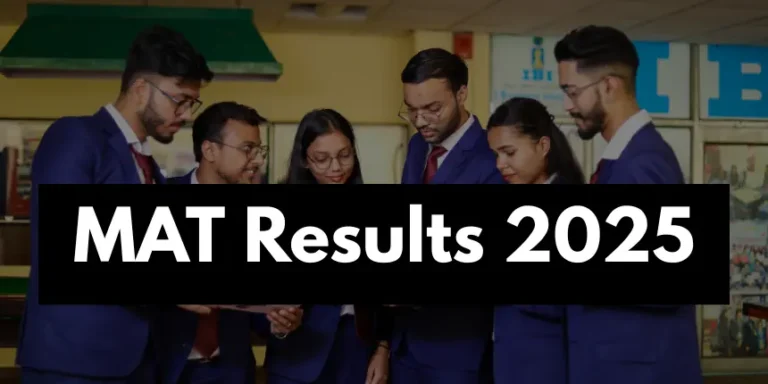Navigating the infamous silk board direction in Bengaluru has become a daily nightmare for millions as the city’s population has doubled from 70 lakh to 1.4 crore. In 2024, Bengaluru ranked 68th in a global congestion level index, with commuters spending an average of 30 minutes and 10 seconds to travel just 10 km – 50 seconds longer than in 2023. This traffic crisis reflects a deeper problem: our city’s infrastructure hasn’t kept pace with its explosive growth.
When seeking the silk board direction bus stop or trying to find the central silk board direction, commuters often face confusion due to inadequate direction boards synonymous with Bengaluru’s planning failures. Furthermore, the silk board address area exemplifies our urban planning challenges, with over 12 million vehicles now crowding city roads. Meanwhile, environmental concerns compound these issues as Bengaluru’s green cover continues to shrink and water scarcity worsens, with 7,000 borewells having dried up last year. Consequently, we’re witnessing a perfect storm of infrastructure failures that demand immediate attention.
The future of our urban spaces ultimately depends on how well we integrate planning, policy, and people. As we’ll explore in this article, new reforms being proposed could finally address these longstanding issues and potentially transform how we approach urban development in Bengaluru and beyond.
Shivakumar proposes urban planning course to VTU
Karnataka Deputy Chief Minister D.K. Shivakumar has taken a bold step toward addressing Bengaluru’s urban planning challenges, including the notorious silk board direction chaos. Instead of proposing yet another infrastructure project, Shivakumar has opted for a fundamental approach—improving how India educates its urban planners.
Letter sent to VTU Vice Chancellor
In a strategic move to tackle Karnataka’s growing urban challenges, Shivakumar has written a formal letter to the Vice Chancellor of Visvesvaraya Technological University (VTU). The letter specifically recommends introducing an undergraduate course in urban town planning. This initiative represents a shift in how policymakers are approaching urban crises—not merely as infrastructure deficits but as consequences of poor institutional capacity and inadequate specialized training.
“In view of Karnataka’s growing need for sustainable urban development, I have written to the Hon’ble Vice Chancellor of VTU requesting the introduction of an undergraduate course in Urban Town Planning,” Shivakumar stated in a social media post. The post highlights his understanding that proper urban planning education is essential for addressing problems like the confusing central silk board direction signage and chaotic silk board bus stand direction that frustrate daily commuters.
Essentially, the letter signals Shivakumar’s belief that long-term solutions to urban planning failures—such as inadequate direction board synonyms and confusing silk board address markings—require professional expertise rather than band-aid fixes.
Proposal targets SKSJTI in Bengaluru
Notably, Shivakumar has specifically recommended the Government Sri Krishnarajendra Silver Jubilee Technological Institute (SKSJTI) in Bengaluru as the host institution for this new program. This choice is strategic given the institute’s location in the heart of Bengaluru, where urban planning challenges are most visible.
“Establishing this course at SKSJTI will not only strengthen the state’s capacity for structured urban growth, but also prepare a new generation of professionals equipped to address the evolving challenges in urban infrastructure, planning and policy,” Shivakumar explained in his letter to the VTU vice-chancellor.
The Deputy Chief Minister, who also oversees Bengaluru development, emphasized that this course would help build a cadre of professionals who will play a vital role in planning, shaping, and building the cities of tomorrow. Unlike short-term solutions that merely address symptoms of poor planning—such as the silk board direction bus stop confusion—this educational initiative aims to create professionals who understand how to align design, policy, and people.
Additionally, Shivakumar envisions this program elevating Karnataka “on a global scale as an incubator for urban planners”. This vision connects directly to his belief that “the future of our urban spaces depends on how well we integrate planning, policy, and people”.
The proposal demonstrates Shivakumar’s understanding that cities cannot be made more livable through quick fixes alone but require professional planners who comprehend the complex interplay between design, policy, and human needs. At locations like the silk board junction, where direction confusion epitomizes planning failures, professionally trained urban planners could make significant differences in future development.
Proposal aims to address India’s urban planning deficit
India’s urban planning landscape faces a critical deficiency that extends far beyond the chaotic traffic at junctions like the silk board direction. The root of these urban challenges lies in a severe shortage of trained urban planners and inadequate educational infrastructure to produce them.
Urban planning education remains underdeveloped
The scale of India’s urban planning education deficit is staggering. While the country requires approximately 1.1 to 1.2 million urban planners to effectively manage its rapidly growing cities, it currently has merely 5,000 trained town and city planners. This means India has just about 0.4% of the urban planners it needs. The shortage is particularly evident in cities like Bengaluru, where confusing silk board address systems and inadequate direction board synonyms reflect this planning vacuum.
Currently, only 26 institutions across India offer urban planning education at various levels. These programs collectively produce approximately 700 urban planners annually—a figure woefully inadequate for a country where urban populations are expanding at unprecedented rates. Moreover, the existing educational framework often fails to integrate contemporary challenges like climate change adaptation, disaster resilience, and digital infrastructure planning.
The educational gap becomes even more pronounced when comparing India with other countries. While the United States has one urban planner for every 4,000 citizens, India struggles with just one planner for every 75,000 urban residents. This disparity helps explain why even basic urban navigation systems—such as finding the central silk board direction or locating the silk board direction bus stop—remain persistently problematic.
Lack of trained professionals linked to civic failures
The consequences of this professional deficit manifest daily in Indian cities. Urban planning failures contribute directly to issues like inadequate public transport, poor land use management, and ineffective traffic solutions. The chaos at locations like the silk board bus stand direction is not merely a traffic engineering problem but a symptom of insufficient professional planning capacity.
According to urban experts, this shortage creates a cascading effect on governance. Municipal bodies often lack in-house planning expertise, forcing them to outsource critical planning functions to consultants who may not fully understand local contexts. This results in disjointed development where planning becomes reactive rather than proactive—responding to crises instead of preventing them.
The planning deficit is further exacerbated by bureaucratic structures. Urban local bodies in India typically have minimal planning departments, with many smaller municipalities lacking planning cells entirely. Even metropolitan areas like Bengaluru struggle with understaffed planning divisions, where professionals must manage massive urban areas with limited resources.
The skills gap extends beyond numbers alone. Modern urban planning requires interdisciplinary knowledge spanning transportation, housing, environment, social equity, and technology integration. However, many existing programs remain heavily focused on physical planning without adequately addressing socio-economic dimensions. This explains why problems like unclear signage systems and confusing silk board direction indicators persist despite repeated infrastructure investments.
Shivakumar’s proposal to establish an urban planning course at VTU represents a significant step toward addressing this fundamental gap. By focusing on education rather than merely physical infrastructure, the initiative acknowledges that sustainable urban solutions require human capital investment. Without enough trained professionals who understand the complex interplay between spatial design, policy frameworks, and citizen needs, even the most ambitious infrastructure projects will continue to fall short of their potential.
Karnataka positions itself as a hub for urban innovation
Beyond addressing immediate challenges like the confusing silk board direction signage, Deputy Chief Minister Shivakumar’s urban planning initiative positions Karnataka as a center for urban innovation excellence. This strategic move builds upon the state’s growing reputation as a technology and innovation powerhouse, currently hosting over 500 Global Capability Centers that account for 35% of India’s total.
Shivakumar envisions Karnataka as global incubator
Throughout his communications about the proposed urban planning course, Shivakumar has consistently emphasized a vision that extends far beyond solving immediate problems like the confusing silk board address system. His statement that the course would “elevate Karnataka on a global scale as an incubator for urban planners” reveals ambitious goals for establishing the state as an innovation hub.
“The future of our urban spaces depends on how well we integrate planning, policy, and people. This is our moment to lay that foundation and shape a more sustainable and inclusive tomorrow,” Shivakumar stated. This vision aligns with Karnataka’s broader innovation ecosystem, which presently includes several major initiatives.
For instance, the recently announced Global Innovation Hub, District I, at Bengaluru Airport City exemplifies the state’s commitment to fostering innovation. This hub, spread over 28 million square feet, will focus on technologies including artificial intelligence, quantum computing, and blockchain while promoting innovation across aerospace, smart cities, space, defense, retail, telecom, and financial services sectors.
Course to align with sustainable development goals
The proposed urban planning education initiative will connect directly with Karnataka’s established sustainable development framework. The state has developed comprehensive strategies and action plans for 16 Sustainable Development Goals (SDGs) by 2030, encompassing 679 indicators.
Given that Karnataka aims to achieve all 17 SDGs through expert-led discussions and stakeholder involvement, the urban planning course represents a practical step toward building institutional capacity to achieve these goals. The state has already formed a dedicated SDG Cell in its Planning Department and established monitoring committees to track progress.
Alongside these efforts, initiatives such as Innovate@DULT (Directorate of Urban Land Transport) proactively support, implement, and fund unique initiatives in sustainable urban mobility. The directorate oversees urban land transport initiatives across Karnataka’s urban and local planning areas.
By integrating urban planning education with sustainable development goals, Karnataka is creating a foundation for addressing complex challenges like the silk board direction bus stop confusion or inadequate direction board synonyms. The approach focuses on creating professionals who can develop solutions aligned with global sustainability frameworks while addressing local challenges like the central silk board direction signage problems.
Overall, this initiative positions Karnataka not merely as a reactive problem-solver but as a proactive hub for urban innovation that can export planning expertise to other regions facing similar challenges.
How education reform could reshape Indian cities
Education reform holds transformative potential for addressing India’s urban planning crisis, extending well beyond temporary fixes for problems like confusing silk board direction signs. The NITI Aayog report reveals a shocking statistic: town planning departments across states have vacancies as high as 42% of sanctioned posts.
Focus on long-term human capital investment
Human capital investment represents the most significant long-term investment a country can make for future prosperity and people’s well-being. In urban planning specifically, this means creating a sustainable pipeline of skilled professionals rather than merely addressing immediate infrastructure gaps. The Advisory Committee recommends sanctioning an additional 8,268 town planners’ posts to close critical gaps in planning capacity.
Although infrastructure development remains essential, without adequate human capital these investments cannot be properly maintained or leveraged. Therefore, education reform serves as the foundation for sustainable urban solutions—potentially eliminating confusion surrounding locations like the silk board bus stand direction or central silk board direction.
Bridging policy, design, and people through curriculum
Urban planning education must evolve to bridge the gap between technical expertise and human needs. Future curricula should integrate:
- Multi-disciplinary expertise across transportation, housing, environment and technology
- Technical proficiency in modern planning tools
- Understanding of social contexts and citizen experiences
Since urban planning spans multiple domains, students must develop proficiency in written, oral, and graphic communication methods. This comprehensive approach could ultimately resolve practical issues like inadequate direction board synonyms at complex junctions.
Expert quotes on institutional capacity building
“The lack of human resources has emerged as a major bottleneck in the State machinery responsible for urban planning and design,” notes the NITI Aayog report. Analogous to this observation, experts emphasize that the profession needs more structuring, skill-mapping, and data-basing of the workforce.
The Advisory Committee subsequently recommends establishing a ‘National Council of Town and Country Planners’ as a statutory body to set standards and update curricula. Coupled with establishing postgraduate courses in urban planning across central universities, these reforms could create the institutional capacity India desperately needs.
In fact, education reform represents the missing link between India’s urban aspirations and its current reality—a reality where even finding the correct silk board address remains unnecessarily complex.
Can this model be replicated across India?
Shivakumar’s initiative to strengthen urban planning education represents a promising template that could address nationwide challenges—beyond just the silk board direction confusion. The question remains whether this Karnataka model can scale across India’s diverse urban landscape.
Potential for national-level adoption
Currently, India has only about 5,000 registered urban planners—merely one planner per 75,000 urban residents. This ratio falls dramatically short compared to developed countries. As a result, the NITI Aayog estimates India needs between 57,000-90,000 urban planners across various levels of planning frameworks. A more conservative model suggests an immediate requirement of 12,213 town planners, meaning an additional 8,268 posts need creation across all states and Union Territories.
The establishment of undergraduate and postgraduate urban planning programs at institutions nationwide could help bridge this massive gap. Indeed, the model document created by the Institute of Town Planners India offers a comprehensive framework that could be replicated, proposing certificate, diploma, undergraduate, and postgraduate programs with various entry/exit options.
Challenges in scaling urban planning education
Simultaneously, significant obstacles exist in expanding urban planning education. Currently, only 26 institutions offer urban planning education nationwide, collectively producing approximately 700 planners annually. The curriculum itself remains outdated in many institutions, with limited focus on crucial areas like hill planning, coastal regions, and rural areas.
Beyond numbers, existing urban planning programs often lack experiential learning opportunities that connect classroom knowledge with real-world challenges like the confusing silk board bus stand direction issues. Institutional resource constraints further limit expansion possibilities.
Need for central policy support
Ultimately, successful replication requires a cohesive national framework. The Government of India would need to play a catalytic role in supporting capacity building across states and cities—especially smaller Urban Local Bodies. This includes creating enabling mechanisms, promoting decentralization, and helping cities become financially sound.
A National Urban Policy could provide the coordinating framework needed to clarify roles horizontally across ministries and vertically between government levels. Without this central support, even promising models like Karnataka’s will struggle to achieve nationwide impact.
Conclusion
Bengaluru’s infamous Silk Board junction stands as a powerful symbol of our broader urban planning failures. Throughout this examination, we have seen how inadequate infrastructure, confusing navigation, and traffic congestion reflect not just local issues but a nationwide crisis in urban planning expertise. Deputy Chief Minister Shivakumar’s proposal for an urban planning course at VTU therefore represents a fundamental shift in approach—addressing the root cause rather than merely treating symptoms.
This educational initiative addresses a staggering deficit in human capital. India currently operates with just 0.4% of the urban planners it needs, a shortfall that directly contributes to our daily frustrations with traffic, signage, and infrastructure. The stark contrast between one planner per 75,000 urban residents in India versus one per 4,000 citizens in the United States undoubtedly explains many of our persistent urban challenges.
Additionally, Karnataka’s positioning as an innovation hub aligns perfectly with this educational approach. The state already hosts over 500 Global Capability Centers and has established comprehensive frameworks for achieving Sustainable Development Goals. Urban planning education thus becomes another pillar in this foundation of innovation excellence.
Educational reform ultimately offers the most sustainable path forward for our cities. While infrastructure projects provide temporary relief, only a well-trained cadre of urban planning professionals can ensure long-term, integrated solutions that balance technical requirements with human needs. The NITI Aayog’s recommendation to create over 8,200 additional town planner positions across India highlights the urgency of this approach.
Nevertheless, significant challenges remain in scaling this model nationwide. Despite the promising template Karnataka offers, expanding urban planning education faces obstacles including limited institutional capacity, outdated curricula, and resource constraints. Without central policy support and a cohesive national framework, even successful state-level initiatives may struggle to achieve broader impact.
The future of our cities depends on how well we bridge the gap between planning, policy, and people. Accordingly, Bengaluru’s Silk Board direction crisis has become the catalyst for potentially transformative reforms that could reshape urban development across India. The road ahead remains challenging, yet this educational approach offers our best hope for creating cities that serve their residents rather than frustrate them.
FAQs
Q1. What is the current state of urban planning education in India? India faces a severe shortage of trained urban planners, with only about 5,000 registered planners for a population of over 1.3 billion. The country needs between 57,000-90,000 urban planners across various levels of planning frameworks to address its urban challenges effectively.
Q2. How can improving urban planning education help address traffic issues? Better urban planning education can create professionals who understand the complex interplay between spatial design, policy frameworks, and citizen needs. This expertise can lead to more effective traffic management solutions, better public transportation systems, and improved urban infrastructure overall.
Q3. What initiatives are being taken to improve urban planning in Bengaluru? The Deputy Chief Minister of Karnataka has proposed introducing an undergraduate course in urban town planning at Visvesvaraya Technological University. This initiative aims to build a cadre of professionals who can address evolving challenges in urban infrastructure, planning, and policy.
Q4. How does Karnataka plan to position itself as a hub for urban innovation? Karnataka aims to establish itself as a global incubator for urban planners by integrating urban planning education with sustainable development goals. The state is also focusing on initiatives in sustainable urban mobility and has developed comprehensive strategies for achieving Sustainable Development Goals by 2030.
Q5. What are some challenges in scaling urban planning education across India? Scaling urban planning education faces obstacles including limited institutional capacity, outdated curricula, and resource constraints. Currently, only 26 institutions offer urban planning education nationwide, producing approximately 700 planners annually, which is far below the required number to address India’s urban planning needs.




